High turnover challenges organizations everywhere, costing time and resources. You might notice that employees leave more often in some industries or job levels. Take a look at the most recent global turnover rates:
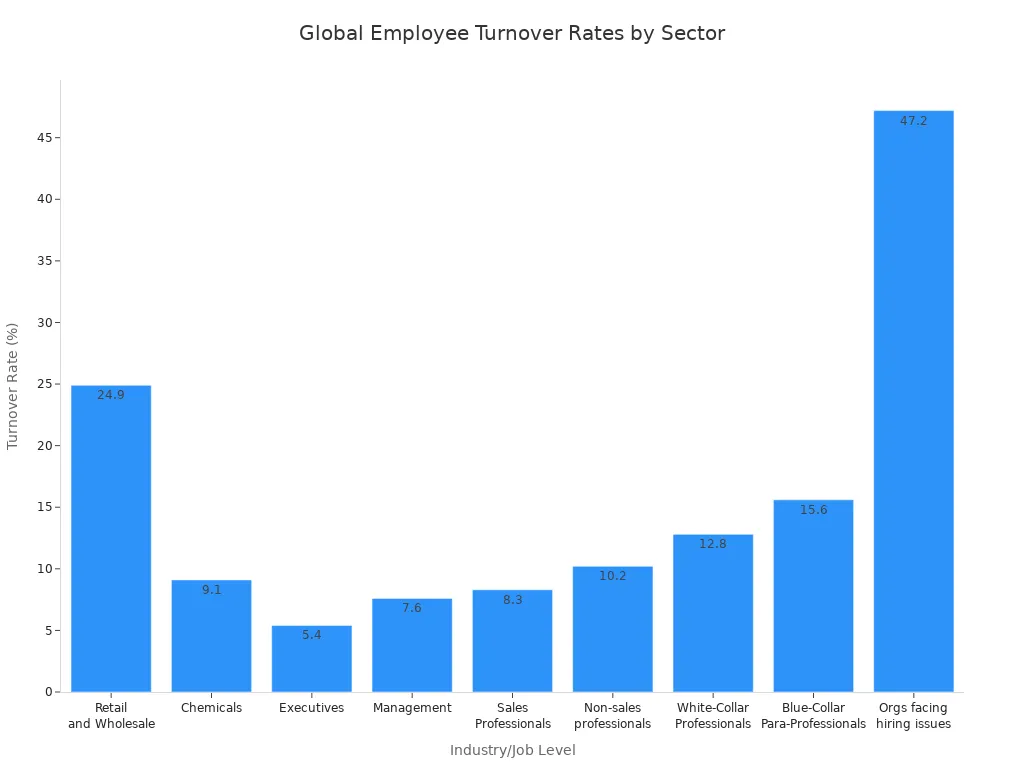
Employee retention software steps in to help you understand why people leave and what keeps them engaged. With better employee engagement and clear communication, you can create a workplace where employees want to stay.
How Employee Retention Software Works
Addressing Employee Turnover
You face the cost of employee turnover every time someone leaves your team. High turnover drains resources and disrupts workflow. Employee retention software helps you tackle these challenges head-on. You get tools that let you see why employees leave and what keeps them motivated.
Here’s how employee retention software addresses high turnover:
- Engagement surveys and feedback tools give you a direct line to employee sentiment. You can spot issues before they become problems.
- Recognition and rewards programs encourage loyalty and boost performance. Employees feel valued when their achievements get noticed.
- Analytics and reporting dashboards track engagement trends and highlight turnover risks. You see patterns and act quickly.
You also benefit from features like employee recognition software and survey tools. These help you understand what employees need and how they feel about their work. When you use these tools, you build a culture where employees feel trusted and appreciated.
According to research by Leigh Branham, only 12% of employees leave for more money. Most employees—88%—leave because they don’t feel trusted or valued.
Let’s look at some real-world results. Companies that use targeted retention programs and assessments have seen dramatic drops in turnover. For example, Signpost reduced turnover by 70% by improving their hiring process. Schweiger Dermatology Group lowered turnover by 57% with a mix of pre- and post-hire strategies. Heartland ECSI saw a 65% decrease after adopting a comprehensive assessment strategy. CirrusMD achieved a 45% reduction among employees who used virtual care services.

You can see that employee retention software makes a real difference. These results show that a strong retention strategy can lower high voluntary turnover and keep your best employees on board.
Improving Retention
You want to improve employee retention, not just react to turnover. Employee retention software gives you the tools to build a workplace where employees thrive. You get more than just data—you get actionable insights.
Let’s break down the main features that drive retention:
| Feature | Description |
|---|---|
| Online Social Workplace Community | Connects remote and on-site employees through a shared dashboard. |
| Recognition and Rewards | Motivates teams with ongoing recognition and prizes. |
| One-on-ones and Feedback | Builds a feedback culture with regular reviews and open communication. |
| Surveys | Collects employee input and lets them influence company decisions. |
| Learning Management | Supports team development with ongoing education opportunities. |
| Customizable Org Chart | Shows positions, skills, and contact info for everyone in the company. |
| Integrations | Works with tools like ADP and Microsoft Teams to streamline workflow. |
You can use these features to create targeted retention programs. For example, regular feedback tools like Pulse Surveys help you measure employee engagement and satisfaction. When you keep a pulse on employee sentiment, you prevent unnecessary turnover.
Here’s what happens when you deploy employee retention software:
| Improvement Type | Description |
|---|---|
| Increased Employee Retention | You identify why employees leave and take steps to boost satisfaction and loyalty. |
| Enhanced Workforce Productivity | Data insights help managers support employees, leading to better performance. |
| Improved Employee Satisfaction | Proactive measures address gaps, raising morale and job satisfaction. |
You also need to consider how you implement these strategies. The right employee retention software adapts to your organization’s size and needs. Small businesses may use lightweight recognition tools. Large enterprises need platforms that scale across regions and roles. Predictive analytics, bias alerts, and attrition forecasting set advanced retention engines apart from basic survey tools.
| Factor | Description |
|---|---|
| Size and complexity of workforce | Choose tools that fit your organization’s structure and compliance needs. |
| Depth of analytics | Look for predictive insights and attrition forecasting. |
| Integration with the flow of work | Pick software that works with your existing HRIS and communication platforms. |
| Manager enablement | Empower managers to coach and support employees in real time. |
| Scalability | Make sure your retention platform grows with your organization. |
You see measurable improvements when you use employee retention software. Employees feel more engaged, managers make better decisions, and your organization becomes more resilient. You lower the cost of employee turnover and build a culture where employees want to stay.
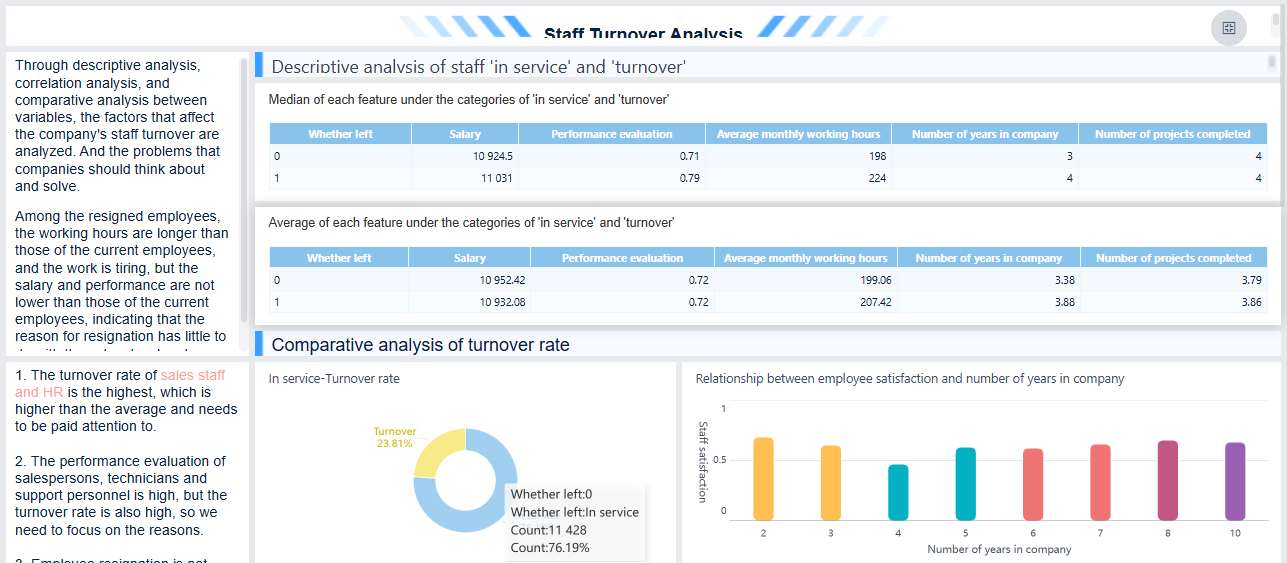
Key Features for Employee Retention Software
Analytics and Dashboards with FineBI
You want to make smart decisions about employee retention. FineBI gives you the tools to do just that. With its analytics and dashboards, you can track key metrics like attrition rate, job role, and average age. You see patterns in employee turnover and spot areas that need attention. FineBI’s self-service features let you build dashboards without coding. You drag and drop charts, filter data, and create reports that help you understand your workforce.
| KPI | Description |
|---|---|
| Attrition Rate | Measures the percentage of employees leaving |
| Gender | Analyzes gender distribution among employees |
| Education Field | Examines the educational background of employees |
| Job Role | Identifies roles with higher attrition rates |
| Average Age | Provides insights into the age demographics |
FineBI supports visualizations like line charts, cohort analysis, and funnel charts. These help you track retention trends and see where employees drop off. TXC Corporation used FineBI to democratize data access and improve analytical efficiency. Their teams now use dashboards to monitor employee retention and drive better retention strategy decisions.
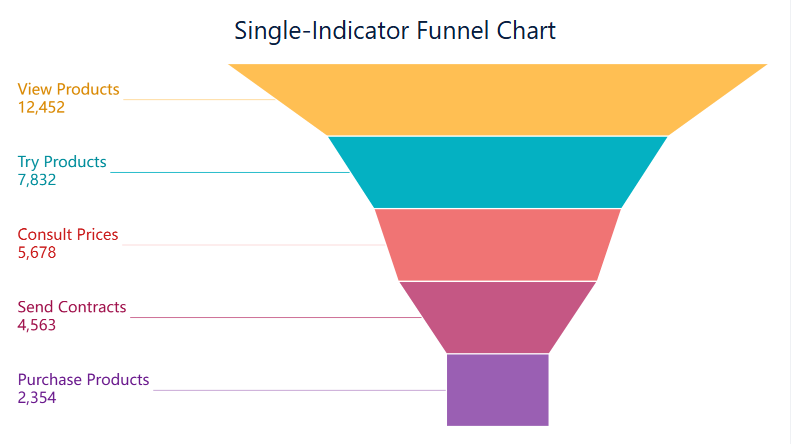
Feedback and Recognition Tools
Feedback matters. You need to know how employees feel about their work. Employee retention software makes feedback easy and continuous. You collect feedback through surveys and one-on-one reviews. This helps you catch issues early and act fast. Recognition and rewards programs boost morale. When you recognize achievements, employees feel valued and stay engaged.
Employee recognition builds a positive culture. Amteck saw a 65% increase in employees expressing core values after starting a recognition program. Their retention rate reached 85% among long-term employees. Teams with high recognition scores also showed strong engagement. You can use analytics to see which teams need more recognition and adjust your retention strategy.
Real-Time Engagement
Real-time engagement features keep employees connected. You use mobile scheduling and attendance tools to give employees control over their work. These features help reduce turnover, especially in high-turnover industries. Employee retention software lets you address problems like unclear expectations and limited growth opportunities. You empower employees to take charge of their schedules and recognize their achievements instantly.
Platforms with real-time engagement tools transform unstable jobs into lasting careers. You see lower turnover and higher satisfaction. When you combine analytics, feedback, and recognition, you build a strong retention strategy that keeps employees motivated and loyal.
Employee Retention Software Strategies

Identifying At-Risk Employees
You want to stop employee turnover before it starts. Employee retention software gives you the power to spot turnover risks early. FineBI helps you analyze employee data and predict who might leave. You can use dashboards to track patterns and see warning signs. With FineChatBI, you get conversational analytics, so you can ask questions and get real-time insights about your team.
Here’s a quick look at the most effective data-driven strategies for identifying at-risk employees:
| Strategy | Description |
|---|---|
| Turnover rate | Measures how many employees leave over a specific period. |
| Flight risk scores | Uses data like tenure and engagement survey responses to flag employees who might leave. |
| Employee engagement trends | Tracks changes in engagement, career growth, and manager support. |
| Retention by segment | Breaks down retention by role, department, or demographics to find problem areas. |
| Predictive analytics | Uses machine learning to spot early signs of disengagement and turnover risks. |
You can also look at compensation ratios, years at the company, performance reviews, and employee surveys. FineBI brings all this data together, so you can build a proactive retention strategy that works.
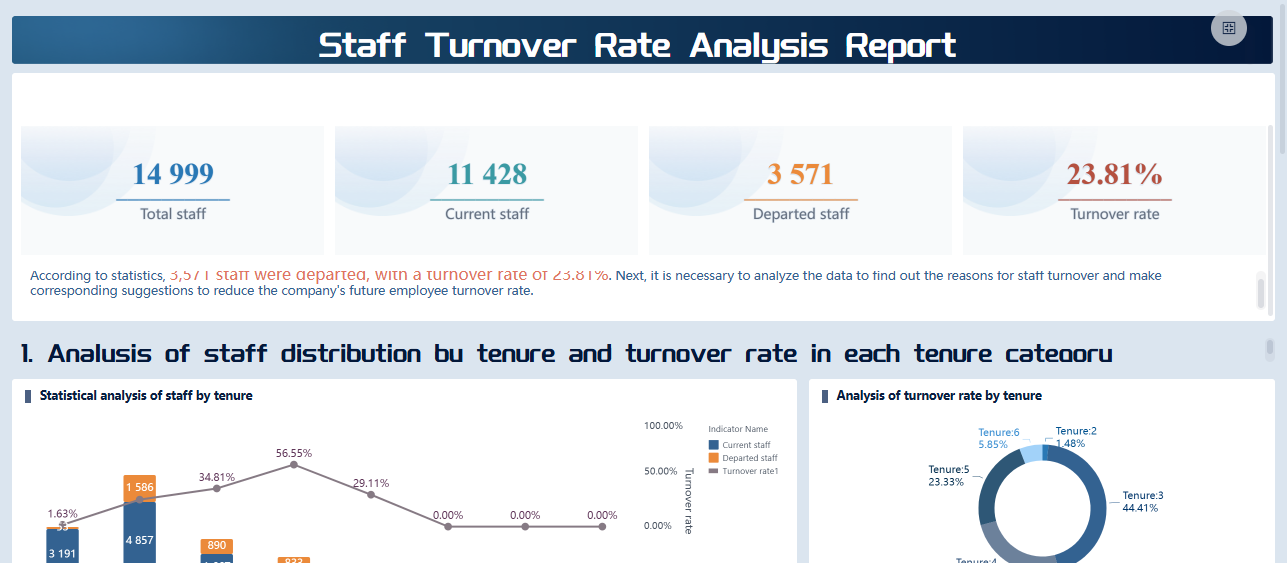
Monitoring Burnout and Satisfaction
Burnout and low satisfaction can lead to high employee turnover. Employee retention software helps you monitor these issues in real time. FineBI tracks work hours, productivity, and break patterns. You see who works too much or who struggles with their workload. This lets you act fast to support employees and improve satisfaction.
You can use these tools to:
- Track work hours and spot missed breaks.
- See drops in engagement or slower task completion.
- Find employees handling too many tasks.
FineChatBI makes it easy to ask about employee satisfaction and get instant answers. You can check on employee job satisfaction, see trends, and adjust your retention strategy. When you use employee retention software to monitor satisfaction and burnout, you create a healthier workplace. Employees feel supported, and you lower turnover risks across your organization.
Supporting Growth and Communication With Employee Retention Software

Career Development
You want your employees to grow and succeed. Employee retention software makes it easier to support career development. You can track skills, set goals, and match employees with mentors. When you offer structured growth opportunities, you build a positive culture where employees feel valued. Many companies see higher retention rates when they invest in career development. Engagement survey tools help you measure satisfaction and spot areas for improvement.
Here’s a quick look at how employee retention software supports career development:
| Evidence Type | Description |
|---|---|
| Improved Retention Rates | Software tracks employee data and engagement levels, providing early warnings of disengagement. |
| Stronger People Strategy | Data insights help maintain a talent pool and address employee dissatisfaction proactively. |
| Career Development Initiatives | Tools facilitate skill-building and mentorship opportunities, aligning personal and organizational goals. |
You see real results. A Gartner study found that 56% of employees consider career development crucial for staying with a company. Glassdoor reports that 74% would leave for better growth options. SHRM says organizations investing in development see a 25% lower turnover rate. Google’s mentoring program led to a 50% reduction in turnover. When you align personal goals with company success, you create a culture that supports employee retention and satisfaction.
- Companies that prioritize career development see higher retention rates.
- Structured growth opportunities foster a culture where employees feel valued.
- Engagement initiatives, such as mentorship, reduce attrition and boost satisfaction.
Enhancing Communication
Communication shapes your workplace culture. Employee retention software gives you tools to keep everyone connected. You can use pulse surveys, peer-to-peer recognition, and knowledge-sharing spaces. These features help you measure employee sentiment and provide actionable insights. When you encourage recognition and collaboration, you build a positive culture that boosts employee morale and satisfaction.
You notice measurable outcomes. Remote workers report an 85% increase in their sense of community. Cross-departmental collaboration doubles with dedicated spaces for sharing knowledge. Recognition programs reach 94% of staff, leading to a 40% increase in engagement scores. Effective communication strategies help managers identify retention risks early, keeping your workforce stable even during talent shortages.
- The software encourages recognition and fosters collaboration.
- Pulse surveys and peer recognition help you track satisfaction and engagement.
- Managers use communication tools to address retention risks and support employees.
Employee retention software helps you create a workplace where employees feel heard, valued, and connected. You build a culture of trust and support, leading to higher satisfaction and lower turnover.
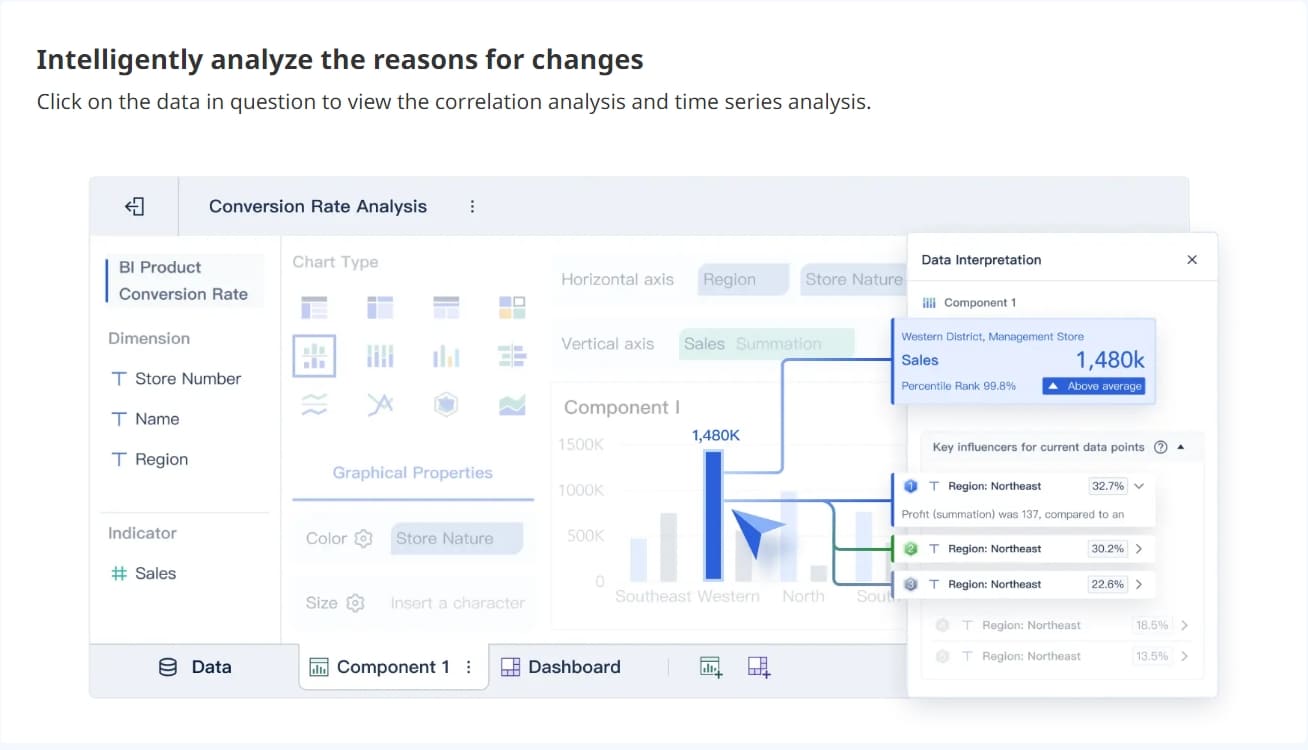
You can transform your workplace with employee retention software. When you use tools like FineBI, you gain data-driven insights that help you lower turnover and build a stable team. You create a culture where employee engagement, recognition, and growth matter. Companies that focus on open communication, learning, and a positive culture see stronger retention and less turnover. With the right employee retention software, you support your employees, strengthen your culture, and make retention a core part of your success.
| Benefit | Impact |
|---|---|
| Informed retention strategies | Lower turnover and higher employee loyalty |
| Stronger workplace culture | Boosts engagement and satisfaction |
| Data-driven decisions | Improves retention and workforce stability |
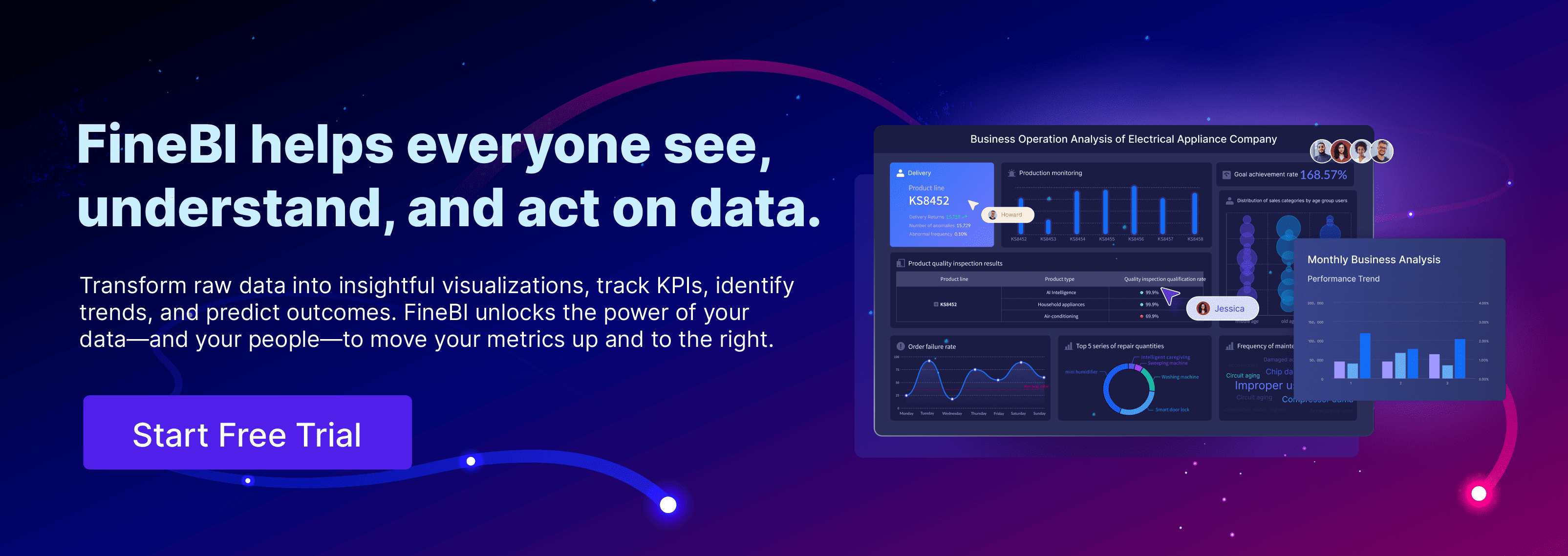
Continue Reading About Employee Retention Software
How to Do Retention Analysis for Business Success
What is Pareto Chart and How Does it Work
How DuPont Analysis Helps You Understand Your Business
FAQ

The Author
Lewis
Senior Data Analyst at FanRuan
Related Articles

What is Retention and Why It Matters Across Different Fields
What is retention? It means keeping customers, employees, or knowledge over time—a key metric for loyalty, value, and success in any field.
Lewis
Nov 16, 2025
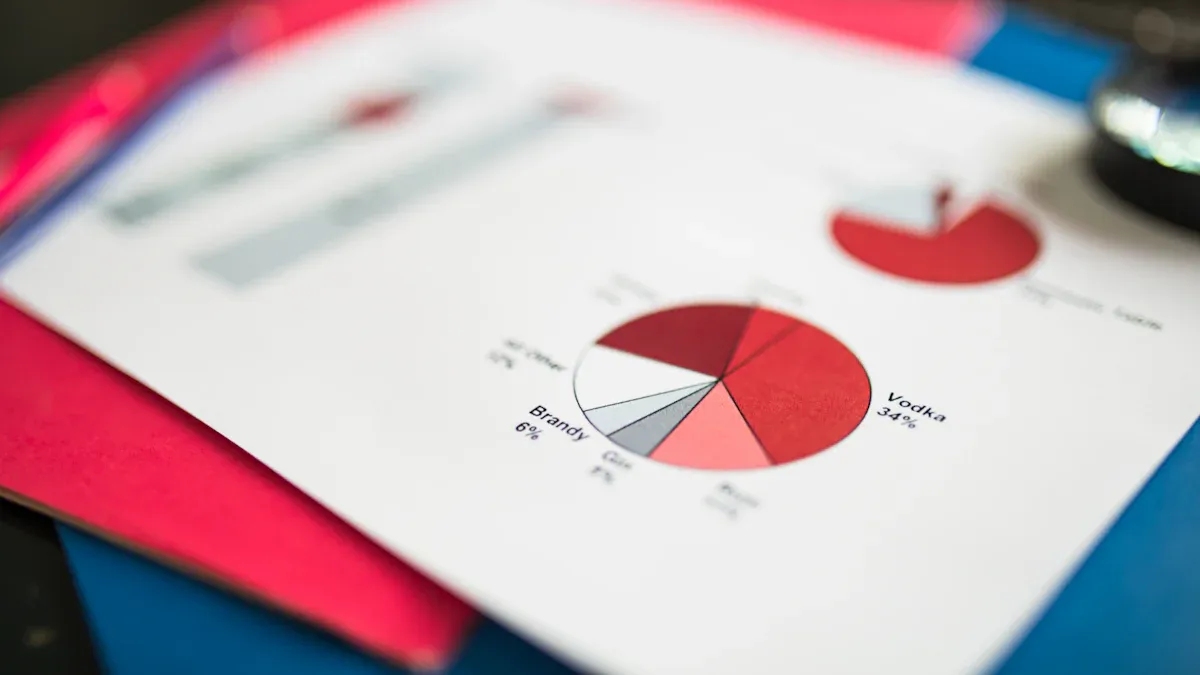
What is Data as a Product and What Make It Valuable
Data as a product means treating data as a user-focused asset, driving business value through quality, usability, and actionable insights.
Lewis
Nov 16, 2025

What Is Data Modernization Services and Why Is It Important
Data modernization services upgrade legacy systems for better access, security, and AI readiness, helping businesses thrive in 2025’s digital landscape.
Lewis
Nov 16, 2025



